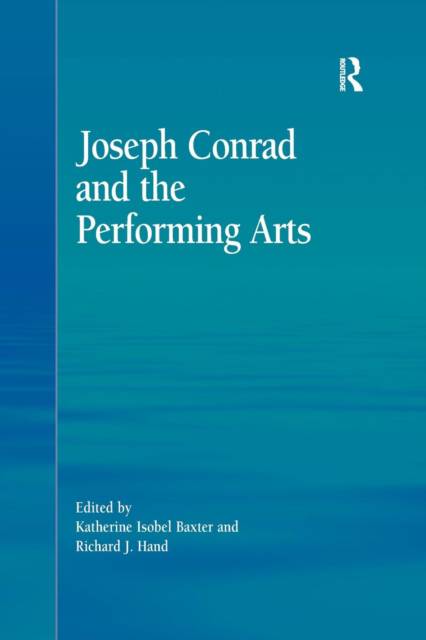
- Afhalen na 1 uur in een winkel met voorraad
- Gratis thuislevering in België vanaf € 30
- Ruim aanbod met 7 miljoen producten
- Afhalen na 1 uur in een winkel met voorraad
- Gratis thuislevering in België vanaf € 30
- Ruim aanbod met 7 miljoen producten
Zoeken
€ 44,45
+ 88 punten
Uitvoering
Omschrijving
Conrad's fiction is characterized by an enduring recourse to the performing arts for metaphor, allegory, symbol, and subject matter; however, this aspect of Conrad's non-dramatic works has only recently begun to come into its own among literary critics. In response to this seminal moment, Joseph Conrad and the Performing Arts offers an exciting, interdisciplinary forum for one of the most interesting and nascent areas of Conrad studies. Adopting a variety of theoretical approaches, the contributors examine major and neglected works within the context of the performing arts: cultural performance in Conrad's Malay fiction; Conrad's use and parody of popular traditions such as melodrama, Grand-Guignol, and commedia dell'arte; Conrad's engagement with the visual culture of early cinema; Conrad's interest in the motifs of shadowgraphy (shadow plays); Conrad's relationship to Shakespeare; and the enduring influence of opera on his work. Taken together, the essays provide, through solid scholarship and richly provocative speculation, new insight into Conrad's oeuvre, and invite future dialogue in the burgeoning field of Conrad and the performing arts.
Specificaties
Betrokkenen
- Auteur(s):
- Uitgeverij:
Inhoud
- Aantal bladzijden:
- 174
- Taal:
- Engels
Eigenschappen
- Productcode (EAN):
- 9781138376274
- Verschijningsdatum:
- 3/01/2019
- Uitvoering:
- Paperback
- Formaat:
- Trade paperback (VS)
- Afmetingen:
- 156 mm x 234 mm
- Gewicht:
- 258 g

Alleen bij Standaard Boekhandel
+ 88 punten op je klantenkaart van Standaard Boekhandel
Beoordelingen
We publiceren alleen reviews die voldoen aan de voorwaarden voor reviews. Bekijk onze voorwaarden voor reviews.











